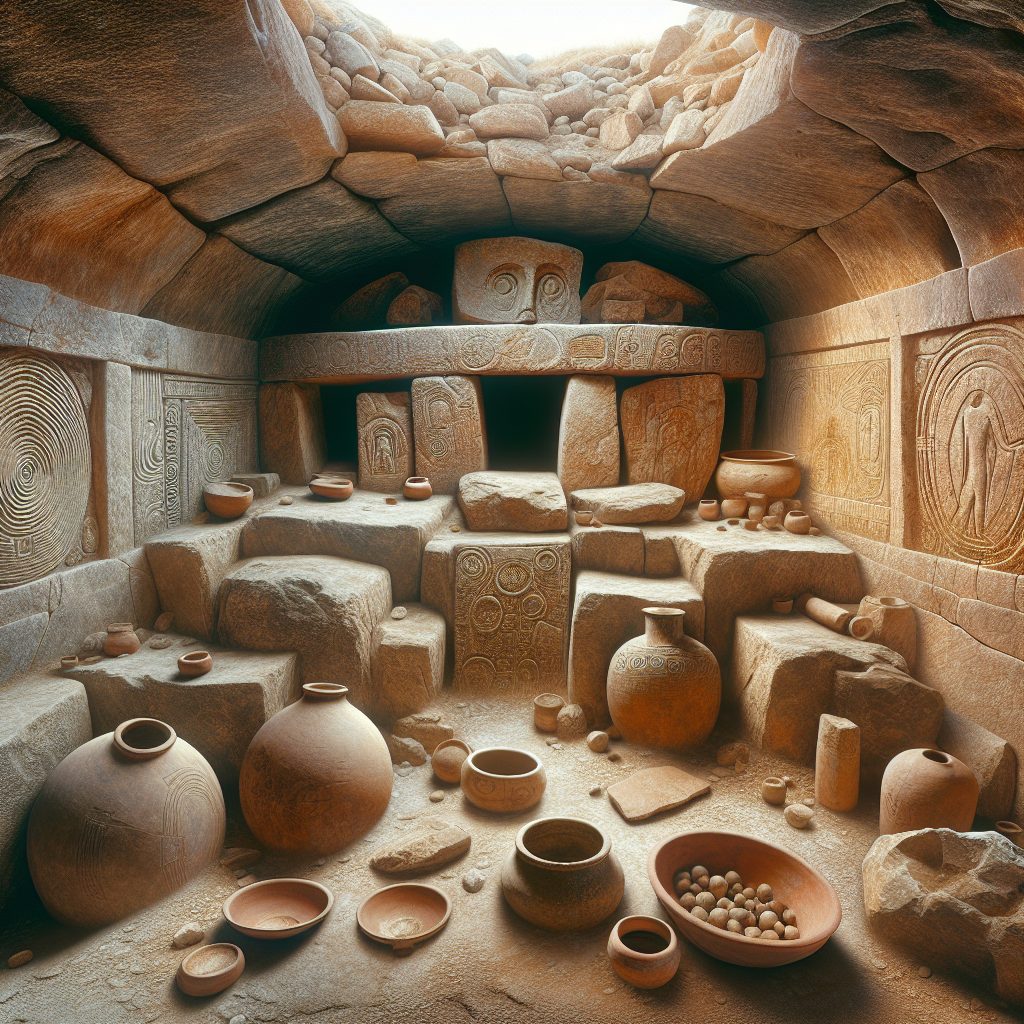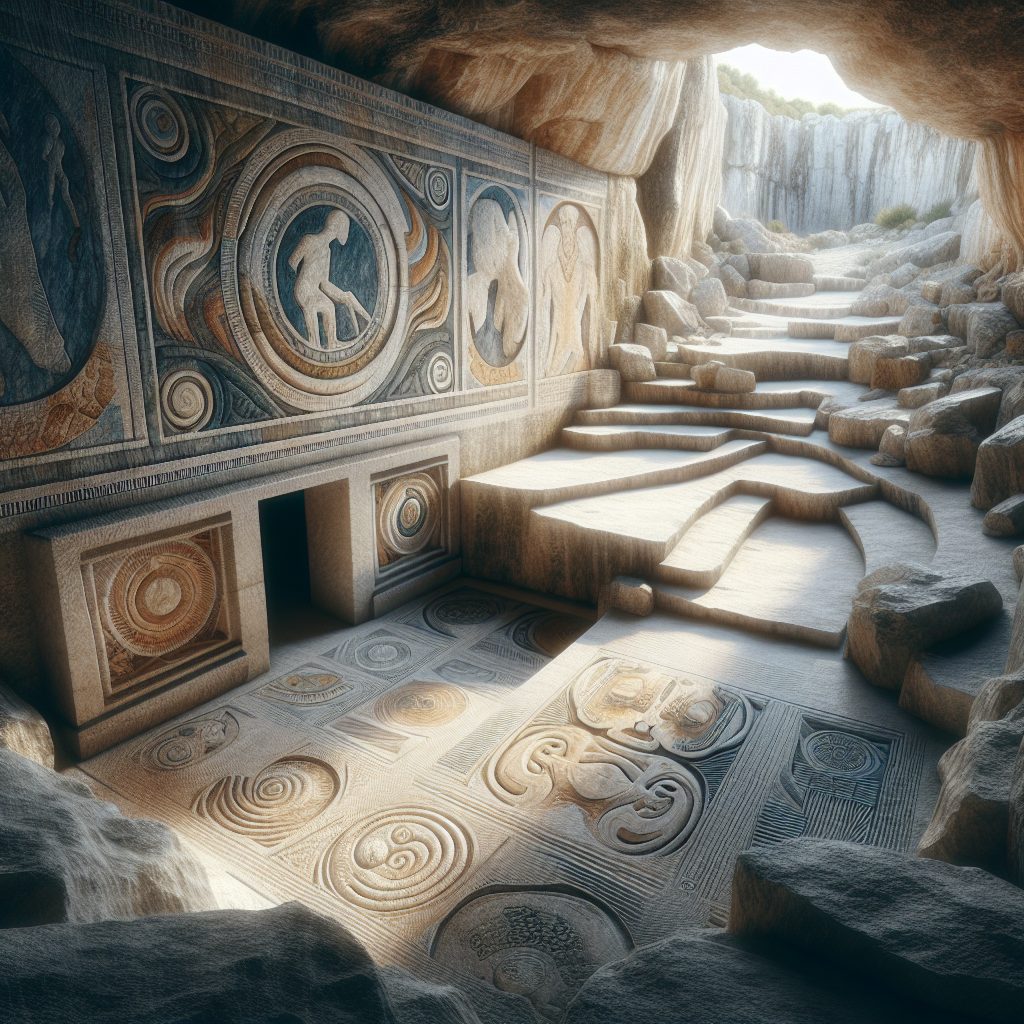A fascinating aspect of ancient Sardinian history lies in the burial rituals of the Domus de Janas, which translates to “House of the Fairies” in English. These unique funerary structures provide a window into the spiritual beliefs and practices of our ancestors. The Domus de Janas, dating back to the Neolithic and Copper Age periods, are ancient hypogea or rock-cut tombs found throughout the island of Sardinia. These burial chambers, carved into the soft limestone cliffs and hillsides, hold great significance in understanding the cultural and social aspects of this ancient civilization.
The burial rituals associated with the Domus de Janas are intriguing and offer valuable insights into the lives and beliefs of the people who created them. One distinct feature of these tombs is their intricate architectural designs, often adorned with detailed carvings and decorations. This attention to detail suggests a significant cultural investment in honoring the deceased and ensuring their transition to the afterlife. Unearthing the secrets held within these burial sites sheds light on ancient customs, religious practices, and societal structures that shaped the lives of our ancestors.
Moving forward, this article will delve deeper into the key takeaways from the Domus de Janas burial rituals. It will explore the symbolism behind the architectural designs, the significance of the various burial practices, and how these ancient traditions continue to impact our understanding of Sardinian history and culture today. Join us as we uncover the rich tapestry of life and death woven by the ancient Sardinians and delve into the intriguing world of the Domus de Janas burial rituals.
Key Takeaways
1. Domus de Janas were ancient burial sites used by the Nuragic civilization in Sardinia, Italy, between the 17th and 6th centuries BC.
2. The burial rituals in Domus de Janas involved complex and time-consuming processes, including primary and secondary burials, as well as the use of various grave goods and offerings.
3. The primary burials were characterized by the placement of bodies in small chambers carved into the limestone rocks, often accompanied by grave goods such as pottery, bronze objects, and even figurines.
4. The secondary burials, which took place several years after the primary burial, involved the re-opening of the chamber, removal of the skeletal remains, and their rearrangement or deposition in another chamber.
5. The Domus de Janas burial rituals provide valuable insights into the beliefs and cultural practices of the Nuragic civilization, shedding light on their views on death, the afterlife, and the importance of ancestor worship.
What Were the Burial Rituals of Domus de Janas?
Introduction to Domus de Janas Burial Rituals
Domus de Janas refers to the ancient rock-cut tombs found in Sardinia, Italy. These fascinating burial chambers were constructed by the prehistoric Nuragic civilization and were an integral part of their funeral rituals. Let’s delve deeper into the intriguing details of Domus de Janas burial rituals.
Significance of Domus de Janas Tombs
Domus de Janas tombs play a crucial role in understanding the religious and social practices of the Nuragic people. These burial chambers provide valuable insights into their beliefs surrounding death, afterlife, and the importance of ancestor worship.
Design and Architecture
The design and architecture of Domus de Janas tombs are remarkable. These rock-cut tombs are often carved into limestone cliffs, featuring intricate carvings and decorations. The chambers vary in size, with some accommodating multiple bodies. The interiors often contain niches or loculi to house the deceased.
Funerary Rituals and Offerings
The Nuragic people had certain rituals and offerings associated with the burial of their loved ones in Domus de Janas. They believed in the existence of an afterlife and aimed to ensure a peaceful transition for the deceased. Various grave goods and offerings, such as pottery, weapons, jewelry, and food, were placed inside the tombs to accompany the deceased into the afterlife.
Symbolism and Artwork
The walls and ceilings of Domus de Janas tombs are adorned with intricate and symbolic carvings. These carvings often depict scenes related to death, fertility, and religious beliefs. The symbolism found on the tomb walls provides valuable clues about the Nuragic culture and their spiritual practices.
Communal and Individual Burials
Domus de Janas tombs were used for both communal and individual burials. Some tombs were designated for a specific family or lineage, while others served as communal burial places. The choice of burial type depended on various factors, including social status, familial relationships, and religious beliefs.
Beliefs about the Afterlife
The Nuragic people believed in an afterlife, and the Domus de Janas tombs played a crucial role in facilitating the journey of the deceased. They believed that the spirits of the ancestors had the power to influence the living, and the tombs provided a sacred space for communication and connection with the deceased.
Preservation and Conservation Efforts
Preserving and conserving Domus de Janas tombs is of utmost importance to protect and study these ancient burial sites. Archaeologists and experts work tirelessly to document, restore, and maintain these historical structures, ensuring their preservation for future generations.
Tips for Exploring Domus de Janas Tombs
1. Research and learn about the history and significance of Domus de Janas before visiting.
2. Respect the tombs as sacred spaces while exploring and avoid any damage to the carvings or structures.
3. Follow any restrictions or guidelines set by the site authorities regarding photography or touching artifacts.
4. Engage with knowledgeable guides who can provide valuable insights into the rituals and symbolism associated with the tombs.
5. Visit the local museums or archaeological centers to learn more about Domus de Janas and its cultural context.
Frequently Asked Questions
1. What are Domus de Janas burial rituals?
Domus de Janas burial rituals refer to the ancient funerary practices and customs of the prehistoric inhabitants of Sardinia, Italy. These rituals involved the burial of the deceased in rock-cut tombs known as Domus de Janas (Fairy Houses).
2. How old are these burial sites?
Domus de Janas burial sites date back to the Neolithic and Bronze Ages, spanning from around 4000 BCE to 900 BCE. They provide valuable insights into the beliefs and cultural practices of the ancient Sardinians.
3. What do Domus de Janas burial sites look like?
Domus de Janas burial sites are usually small rock-carved chambers, often decorated with engravings or bas-reliefs. These chambers typically have a corridor leading to one or more funerary niches where the deceased were laid to rest.
4. Was cremation common in Domus de Janas burial rituals?
While evidence suggests that cremation was practiced in some instances, in general, the Domus de Janas burial rituals predominantly involved primary inhumation (burial of the body intact) rather than cremation.
5. What artifacts have been found in Domus de Janas burial sites?
Archaeologists have discovered a wide range of artifacts in Domus de Janas burial sites, including pottery vessels, tools, beads, jewelry, and even human remains. These items provide valuable clues about the daily life, beliefs, and social hierarchy of the ancient Sardinians.
6. What do the decorations on the burial chamber walls represent?
The decorations on the burial chamber walls often depict scenes related to fertility, hunting, agriculture, and religious beliefs. These symbolic representations provide insights into the spiritual and cultural world of the ancient Sardinians.
7. How were the Domus de Janas burial sites constructed?
The Domus de Janas burial sites were primarily excavated using stone tools and techniques. The chambers were cut into the rock, and the corridors and niches were carefully shaped. The construction process required extensive labor and skilled craftsmanship.
8. How were the deceased prepared for burial?
The process of preparing the deceased for burial in Domus de Janas involved various rituals, including cleansing the body, dressing it in burial attire, and placing personal belongings or offerings alongside. The exact practices may have varied depending on the specific cultural and religious beliefs of the time.
9. Were Domus de Janas burial sites used by multiple individuals?
Yes, many Domus de Janas burial sites were communal and used to bury multiple individuals from the same community or family over an extended period. This collective approach reflects the significance of ancestral ties and communal identity among the ancient Sardinians.
10. Can these burial sites be visited today?
Yes, some Domus de Janas burial sites are open to the public and can be visited. However, it is important to respect and preserve these ancient sites by following any guidelines or restrictions imposed by local authorities.
Final Thoughts on Domus de Janas Burial Rituals
The Domus de Janas burial rituals offer a glimpse into the fascinating world of the ancient Sardinians. These burial sites not only served as final resting places for the deceased but also held deep cultural and religious significance for the living community. The elaborate rock-cut tombs, intricate decorations, and various artifacts found within these burial sites provide valuable insights into the beliefs, practices, and social structures of the prehistoric inhabitants of Sardinia.
Exploring the Domus de Janas burial sites allows us to connect with our ancestors and appreciate the rich history and heritage of the region. These rituals remind us of the universal human desire to honor and commemorate our loved ones, as well as the importance of preserving and understanding the cultural practices that came before us. By studying and appreciating the Domus de Janas burial rituals, we can gain a deeper understanding of our shared human history and the diverse ways in which different societies express their beliefs and honor their deceased.






